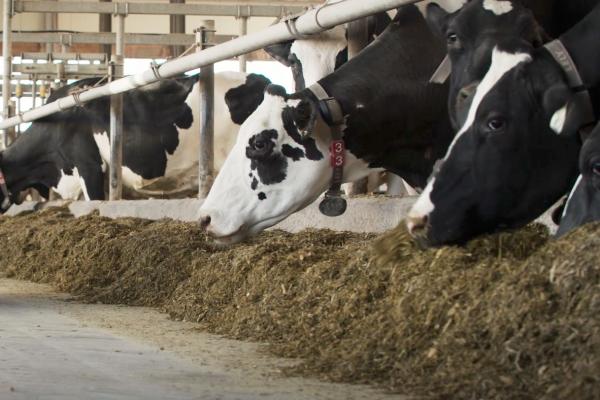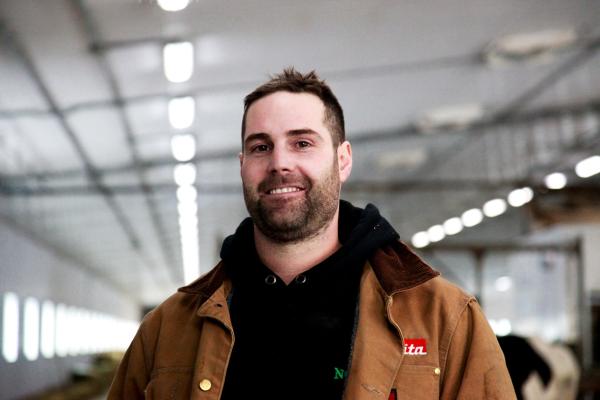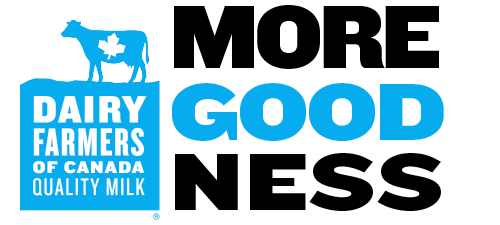Highlights
- For a cow’s health, prevention is key
- Antibiotics are used as a last resort for bacterial infections
- Canadian milk from treated cows is discarded
- Canadian milk is analyzed to ensure it’s untainted before it reaches the consumer
Are antibiotics used to treat an infection in a milking cow?
“Yes, we use antibiotics, but only if necessary. It’s like with people, we don’t take antibiotics unnecessarily,” explains Marie-Claude, a dairy farmer from Quebec. “If we’ve given a cow all the required care and notice an illness or problem that persists, we’ll call the vet who can examine the animal and recommend treatment.”
The number one method Canadian dairy farmers use to avoid illness in the herd is prevention. This entails providing quality feed, fresh and dry bedding, and all the creature comforts that cows require. If a cow appears to be feeling under the weather, a farmer might notice that something is off simply from his or her regular day to day interactions with the herd. But just in case, many farmers nowadays use pedometers to track a cow’s activity, and some have milking systems which collect even more data on cow wellness in order to signal any change in normal activity for a given animal.
It’s important to keep in mind that antibiotics are only used to treat infections caused by bacteria not viruses (antibiotics do not help with viruses like the flu). For cows, the most common reason for antibiotics is mastitis—an infection of the udder— a condition that exist in humans as well (some breastfeeding women experience this). Of course, a veterinarian diagnosis is needed before antibiotic treatment can take place. Fortunately, this problem is usually resolved quickly, as Canadian dairy farmers are vigilant in both prevention (regular cleaning, udder sanitation and so on) and observation of early warning signs (such as changes in udder size, swelling and texture, as well as vigilant monitoring of the milk—visually and using data from milking systems).
How does a farmer know to treat a cow?
If prevention comes first, simple remedies come second, then antibiotics as a last resort. Olivier, a dairy farmer from Quebec, says “We prefer to start with dextrose [a simple sugar] or electrolytes in case she just needs a boost of energy. And if it comes to antibiotics, they’ll be recommended by a vet.” Canadian farmers only give antibiotics to a dairy cow if she needs their help to recover from an infection and they can ease her suffering. Of course, if a cow is taking antibiotics, her milk cannot be used for human or animal consumption, which means her milk is discarded. That’s why it’s also in a farmer’s best interest to only give antibiotics when an animal is truly in need.
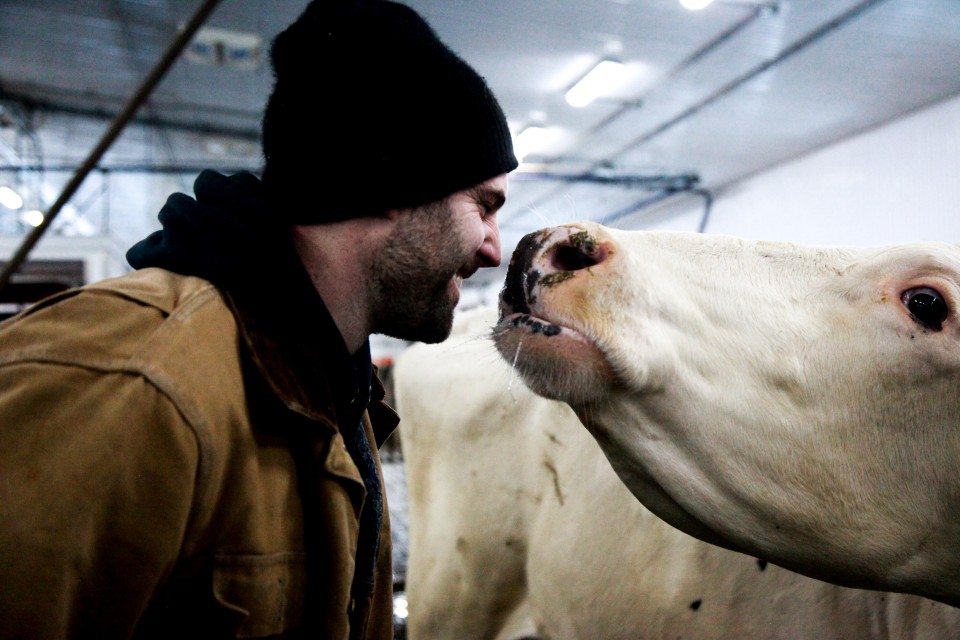
What’s the protocol for using antibiotics to treat a cow?
We want them to be well. That’s our number one priority, for them to be well and taken care of. But we also want to have the best quality milk, so that’s why if a cow is treated with antibiotics, we do discard the milk.” From coast to coast, there’s a standard protocol for taking care of a cow that is being treated with antibiotics as well as what to do with her milk: she is milked separately, and her milk is discarded.
“Whenever we treat a cow with antibiotics, she’ll no longer be milking into the tank for a certain period of time called the ‘withdrawal period’” says Jacob. As per her physiological needs, “She’s milked, but her milk containing antibiotics will not go into the milk tank.” The withdrawal period varies based on the antibiotic and dose given, but the protocols, which are outlined by Health Canada, are the same across the country. Canadian farmers take these very seriously. “Every medication has its own protocol that we need to follow,” says Marie-Claude. “It’s either a number of days or an amount of milkings for which we discard the milk. We don’t use that milk for the calves or for any other purpose. It’s important that we respect that protocol.”
These measures ensure a cow’s system has processed and cleared antibiotics, and that her milk no longer poses any risk to consumers before she can be milked into the bulk tank once again. By following these strict procedures, our farmers provide only milk which is safe for to enjoy – in other words, milk that tests ‘negative’ for antibiotic residues.
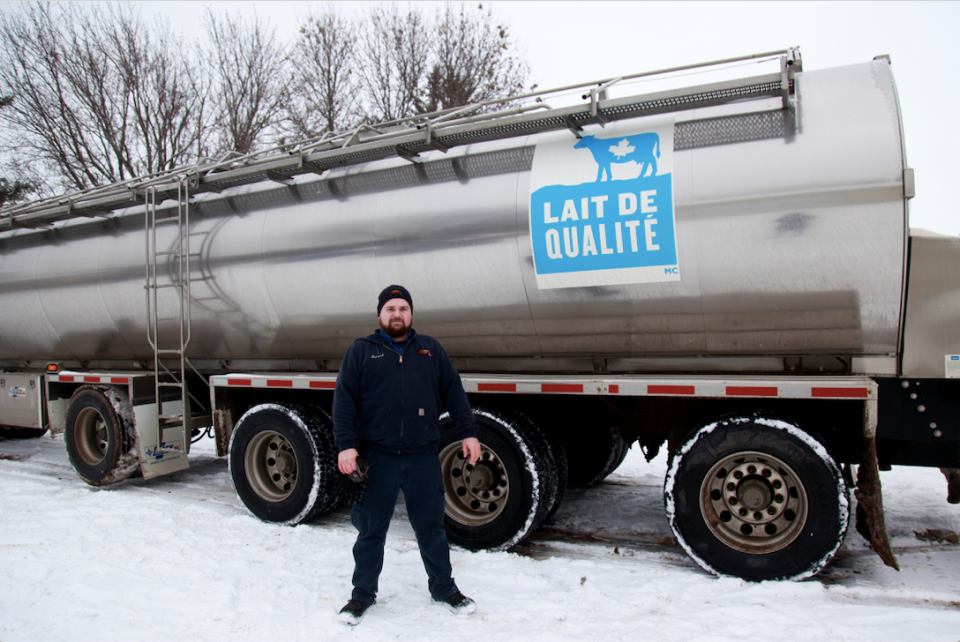
What safeguards ensure Canadian milk is safe to drink?
In addition to farmers respecting the withdrawal period for cows that are being cared for with antibiotics, the milk truck driver will inspect the milk at every farm before collecting it. He or she will grade the milk and take a sample from the bulk tank at every farm before onloading it to the truck. Before offloading the milk at the processing plant, the milk must be analyzed to ensure it’s safe for human consumption. Only milk that is untainted can be entered into the plant. This safeguard is in place to avoid potential human error.
If ever a sample were to come back positive for antibiotic contamination, the farm and farmers concerned would face stiff penalties. No farmer wants this, which is why both prevention and protocol are key to keeping Canadian milk pure and safe. “It’s just never come up that we have shipped milk with antibiotic in it,” says Jeremy.
It all comes down to quality
Canadian dairy farmers are very proud of the quality of the product they deliver. Strict regulations means hard work and extreme vigilance, both on the animal care front and the food safety front, but it’s all worth it in the end.
“We give it our 100% because that’s how we’ve always done it, and that’s important to us,” says Richard. “It gives us a sense of pride. We’re proud to produce high quality milk every single day.”
